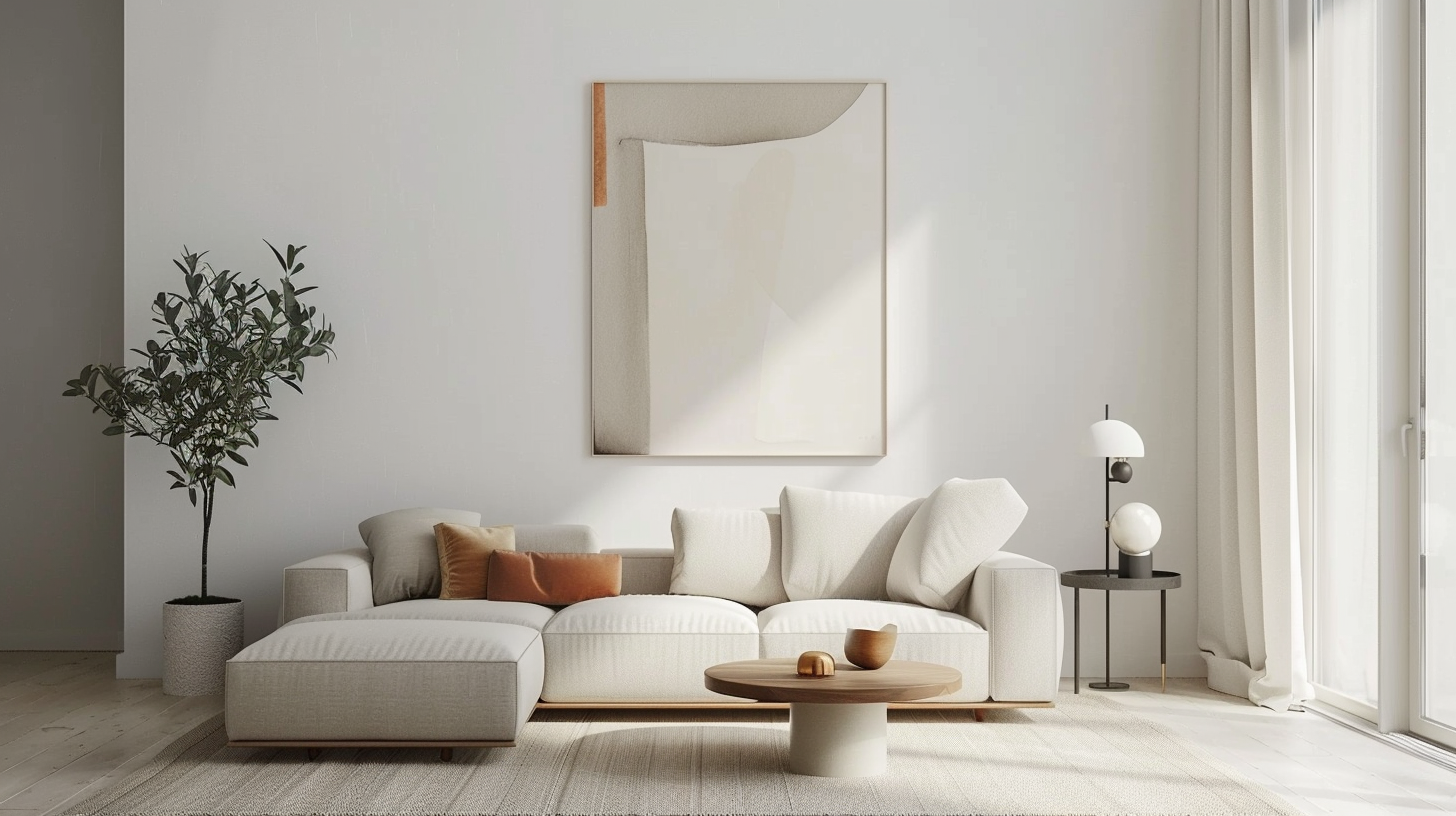
Minimalist interior design is as much about what isn’t there as what is. The concept of negative space, often overlooked, can dramatically elevate a minimalist environment when used strategically. By embracing empty areas, your room can breathe, allowing both function and beauty to coexist seamlessly.
What is Negative Space in Design?
Negative space, also known as white space, refers to the areas in a design that are left untouched by furniture or decoration. These spaces are just as important as the elements they surround. When incorporated thoughtfully, negative space brings balance, focus, and a sense of calm to any room, especially in minimalist settings where simplicity is paramount.
Instead of filling every corner of a room with decor, letting the walls, floor, or empty surfaces speak for themselves can enhance the overall design. This approach aligns with the minimalist philosophy: less is more, and every element should have a purpose.
How Negative Space Compliments Art
One of the most powerful uses of negative space is in conjunction with wall art. In a minimalist home, a singular art piece surrounded by empty space creates a natural focal point. Rather than competing with other decorations, the art is allowed to stand on its own, drawing the eye directly to its colors, shapes, and textures.
Imagine a large abstract or geometric artwork on a clean, white wall with no distractions around it. This use of negative space not only highlights the art itself but also reinforces the room’s sense of openness and tranquility.
Creating Flow and Movement Through Empty Space
Negative space also contributes to the overall flow of a room. Minimalist homes, with their open layouts and uncluttered surfaces, can feel expansive when negative space is applied correctly. Leaving gaps between furniture or decor items ensures that the eye can travel easily through the room, making it feel larger and more cohesive.
For example, a simple arrangement of furniture with space between each piece can make even a small room feel open. By avoiding over-decoration and letting the negative space play its role, you can create a sense of movement and lightness.
Negative Space and Functionality in Minimalist Homes
The intentional use of negative space can also enhance a room’s functionality. In a home office or study, for instance, an uncluttered desk and open shelving can make the workspace more efficient and visually pleasing. Negative space isn’t just about aesthetics; it can make a room more usable and comfortable by giving everything a sense of purpose.
In living spaces, open floor areas with minimal furniture can make a room feel more adaptable. Negative space makes it easier to navigate the room and use it in multiple ways, from hosting guests to relaxing on your own.
Current Design Trends: Embracing Minimalism and Negative Space
As more homeowners seek out the calm and clarity of minimalist interiors, the use of negative space is becoming increasingly popular. Designers are moving away from the cluttered, maximalist look and embracing layouts that allow rooms to “breathe.” This trend is especially evident in modern art selections, where a single bold piece often stands against large, empty backdrops, enhancing both the art and the space it inhabits.
At CABIN ART, we believe that the art of minimalism lies in what you choose to leave out as much as what you include. By incorporating negative space in our designs, we help homeowners achieve balance and calm in their interiors, without sacrificing style.
Striking a Balance Between Art and Space
Ultimately, the key to mastering negative space in minimalist homes is balance. While it’s tempting to fill every empty corner, strategic gaps between items provide a sense of flow and harmony. A well-chosen piece of art, thoughtfully placed within a room’s negative space, can elevate the entire aesthetic and functionality of your home.


